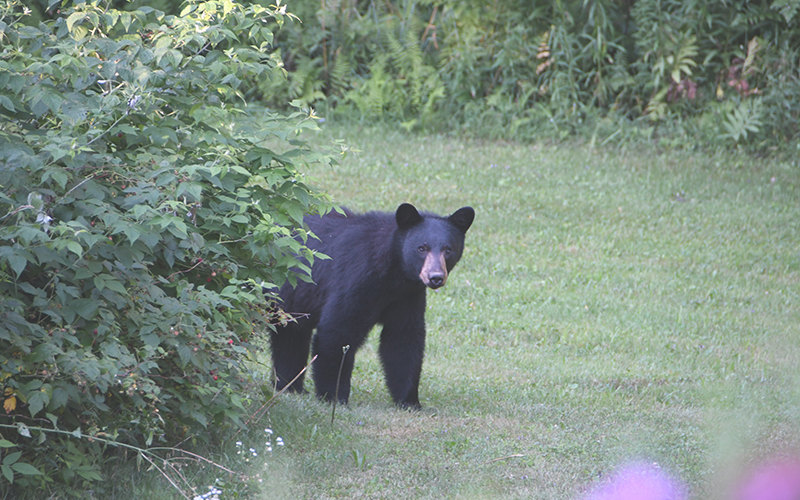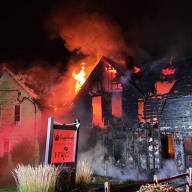Yearlings Move Out: Bears that were born last spring and denned up with mom this past winter are now 18-month-old yearlings. If all goes well, they’ll be the size of a medium-sized dog by the end of June, although their fur coats can make them look larger. Yearling females are often allowed to move in next door to their mom. Yearling males are strongly encouraged to move out and go find a new territory of their own, so most young bears wandering far from home are males.
SPRING LESSONS CAN BE LIFE-CHANGING
No matter how big and furry they look, yearling bears are all trying to figure out how to live without their mom’s help. They are often lonely and lack the fully developed survival skills of an adult bear. They are also hungry and inquisitive and will instinctively check out anything that seems as if it might be a source of food.
Like human teenagers, they are at a very impressionable stage of life. If they quickly discover that human places should be avoided, they will learn to support themselves as wild bears. If they find the backyard pickings are easy, they start down a road that is often a dead end. No matter how cute they look and how hungry they are, the best thing you can do to help yearlings grow up wild is to make sure there’s nothing around your home to attract them.
Adult Bears Look For Mates: Female bears that are now empty-nesters as well as mature females that didn’t give birth last winter will soon be ready to mate. Female bears seldom leave their home ranges; for the good of the gene pool, they let the males come find them. A female bear may mate with several different males, and it’s not uncommon for litter-mates to all have different fathers.
Adult bears have home ranges, not exclusive territories. A home range needs to be large enough to provide food, water, shelter, and mates. The size of a home range varies greatly, but a male bear’s home range can be up to 300 square miles, typically five or six times larger than a female’s living in the same general area. Bears share their home ranges with other bears of both sexes, but not at the same time except for a male and female during breeding season or yearlings that are still hanging out with each other.
Cub Nursery School Continues: Moms are still nursing, but cubs are learning how to supplement their diets with more natural bear foods. Cubs take after their moms in several ways: they are super-smart, have a keen sense of smell, learn quickly, have good memories and are very adaptable. So, if mom teaches them to raid the garbage or bat down bird feeders or sends them in through the pet door to see what’s in the kitchen, it creates a whole new generation of problems for people and bears.
Where’s The Bear Food? Natural spring and early summer foods like tender leaves and grasses and developing plants are not as calorie-dense and nutritious as the nuts and fruits that ripen later in the year, so all bears travel further looking for food. Mother bears usually have between one and three hungry, demanding mouths to feed. Moms start traveling further looking for food, and cubs are left home alone for longer stretches of time, usually near the den or underneath a handy “sanctuary tree” they can climb in a few seconds.
WHAT’S ON THE JUNE MENU?
Black bears are omnivores; they will eat pretty much anything with calories. The bulk of their spring and early summer diet is what people think of as a salad topped with whatever protein might be available – insects, carrion (dead animals), fish, small mammals, reptiles, and amphibians. Nursing mothers need more calories to stay healthy enough to keep producing milk for the cubs and may actually lose weight until more calorie-dense foods become available later in the year and cubs start eating more on their own.
Make It A BearWise June: Now you know the reasons bears and people cross paths more often in June. Explore our many resources that will help you avoid attracting bears and stay safe at home and outdoors. Thanks for doing your part to keep bears wild. Visit http://www.BearWise.org for more information, photos and resources.
Posted by the MRV Bear Initiative with permission from BearWise. The MRV Bear Initiative is a volunteer working group represented by conservation organizations in Duxbury, Fayston, Moretown, Waitsfield and Warren, Friends of the Mad River, the Stark Mountain Foundation, and Sugarbush Resort. Our goal is to collectively improve how we coexist with our calorie-seeking, black bear friends. Check out our resource page at https://www.madrivervalley.com/stewardmrv/living-with-bears/.













